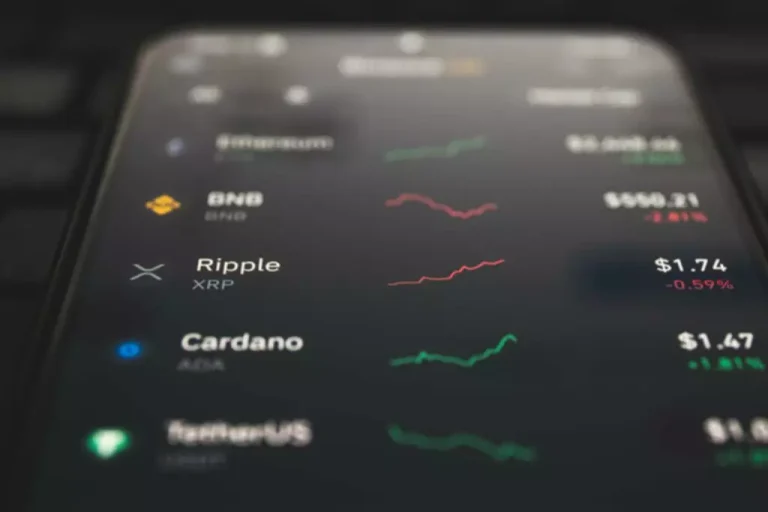Content
Mid- to long-term investors, such as pension funds, mutual funds, and insurance companies, find value in algo trading. It allows them to execute large-scale Prime Brokerage stock purchases without causing price distortions due to significant volume investments. The penultimate phase of algorithmic trading involves executing the algorithm through a computer program and conducting backtesting to assess its potential profitability. There are several types of algorithmic trading strategies, each designed to meet different trading objectives. Understanding these can help you determine which approach best suits your investment goals.
What are the Common Quantitative Data Analysis Methods?
Algorithmic trading can break up that trade into smaller increments to be deployed at coordinated times. Jesse has worked in the finance industry for over 15 years, including a tenure as a trader and product manager responsible for a flagship suite of multi-billion-dollar funds. Of course, like all investments, higher returns typically entail taking on higher risk. For those intrigued by the idea of algorithmic trading, the next step is understanding what you need to get started. Deploy the algorithm in live markets, continuously monitoring performance and adjusting as needed. Choose technical indicators (e.g., Moving Averages, RSI) trading algorithms examples or statistical models that align with the strategy objectives.
Real-Life Applications of Algo Trading
Algo-trading, also referred to as algorithmic trading, automated trading, or black-box trading, involves computer-generated programming that executes market orders. It operates in accordance with predefined rules and instructions based on various parameters such as https://www.xcritical.com/ stock price, timing, quantity, volume, and more. Ever wondered why a trading account is needed and what purpose does it serve? In the world of investing, a trading account is an essential tool if you want to participate in buying and selling financial instruments such as stocks, bonds, options, commodities, etc. It provides access to various financial markets and allows you to execute trades, monitor your portfolio, and potentially generate profits. Let us know more about the benefits and needs of a trading account to engage in trading activities and capitalise on investment opportunities.
- The long and short transactions should ideally occur simultaneously to minimize the exposure to market risk, or the risk that prices may change on one market before both transactions are complete.
- If coding is daunting, leverage no-code platforms that abstract away the technical complexity.
- “The mentorship program was a game-changer. It wasn’t just about learning concepts; it was about applying them to my own challenges with the help of experienced practitioners.”
- The human brains develop codes to instruct systems to make situation-driven decisions.
Types of Algorithmic Trading Strategies
Arbitrage is not simply the act of buying a product in one market and selling it in another for a higher price at some later time. The long and short transactions should ideally occur simultaneously to minimize the exposure to market risk, or the risk that prices may change on one market before both transactions are complete. Traders may, for example, find that the price of wheat is lower in agricultural regions than in cities, purchase the good, and transport it to another region to sell at a higher price.
How to Customise Algorithmic Trading Software to Suit Your Trading Style
Methods like moving averages, random oscillators, etc., help identify the price trends for a particular security. This open-source approach permits individual traders and amateur programmers to participate in what was once the domain of specialized professionals. They also host competitions where amateur programmers can propose their trading algorithms, with the most profitable applications earning commissions or recognition.
It refines strategies by exploring possible weaknesses and then provides reliability. Popular strategies include trend-following, arbitrage, market-making, statistical arbitrage, and high-frequency trading. Each serves a distinct set of objectives, from exploiting trends to providing liquidity. Live markets are dynamic, and algorithms must be constantly monitored to conform to established risk parameters. Trading and investing algos can be considered predatory as they may reduce stock liquidity or increase transaction costs.
Having the right tools and resources at your disposal is essential for being successful with algorithmic trading. The basic concept behind trend following is that once a trend is established, it is likely to continue in the same direction. Trading algorithms implementing this strategy will enter into long positions when the market is trending upwards and short positions when the market is trending downwards. Remember, success in algorithmic trading is a continuous process of monitoring, evaluating, and making necessary adjustments to achieve optimal results.

I very much like the results of this analysis, and now let’s code it and test it on a chart within the platform. Here at tradewithcode, we use a tool called data analyser to analyse huge quantities of data in a matter of minutes, giving us a sort of superpower. Choosing a reputable brokerage firm is a must, as it can reduce the risk of potential problems with brokerage firms going bust with our money, as happened with MF Global. For humans like me, the goal is to run a portfolio (multiple) of strategies automatically while I work on my 9to5 job.
The RSI signals both overbought and oversold prices and when a stock reaches these levels, traders open positions as soon as the RSI dips back into normal territory. As an algo trader, you’ll spend most of your time developing and testing trading strategies using historical market data. The best algorithmic trading platform can also identify arbitrage opportunities. The listing of company X on the Bombay Stock exchange and London stock exchange, for example, poses a potential trading opportunity. Algorithmic trades require communicating considerably more parameters than traditional market and limit orders.

HFT firms employ advanced technology, including high-speed data feeds and low-latency execution platforms, to capitalize on minuscule price discrepancies. To start with algorithmic trading, you need to learn programming languages like Python or R, understand financial markets and trading strategies, and select a trading platform. Backtesting your algorithms on historical data is crucial before deploying them in live trading. Nowadays, many traders and large institutions use algorithms to automate the trading process. They use algorithmic trading to execute large volume trades without the possibility of human-made mistakes.
Using the latest technology, trades can be completed at speeds and frequencies impossible for mere mortals. While it provides liquidity and tightens bid-ask spreads, critics argue it may increase volatility or create “flash crashes.” Regulators keep a close eye on this area to maintain fair and stable markets. As a beginner, HFT is probably not your starting point due to its complexity, cost, and regulatory hurdles, but it’s important to know it exists as a prominent facet of algorithmic trading.
A large part of stock trading in the U.S. is done using algorithms, and they are also used widely in forex trading. A big part of that is high-frequency trading (HFT), often employed by hedge funds. HFT strategies aim to exploit short-term market inefficiencies and price discrepancies, requiring ultra-fast execution speeds and low-latency connectivity to exchanges for millisecond precision. The regulatory authorities always install circuit breakers, limiting the functionality of algo-trades. In addition, the liquidity provided by algo-traders can almost disappear instantly or in seconds.
In short, the changing portfolios help investors get stocks at the right time and the best prices with lower transaction costs. The human brains develop codes to instruct systems to make situation-driven decisions. The mathematical models and algorithms are so created that computerized devices efficiently assess market situations. For example, as per the automated analysis, traders open-close or enter-exit trades. Algorithmic trading refers to automated trading wherein investors and traders enter and exit trades as and when the criteria match as per the computerized instructions. The systems are coded with instructions to undertake trades automatically without human intervention.
In many cases, combining both types—quantitative for measurable trends and qualitative for underlying reasons—can yield the most comprehensive insights. As for now, we will continue to focus on quantitative data for this article. With fewer barriers to entry, it’s easier now to be an algorithmic trader than it has ever been. The trader then cancels the orders once the price has moved upwards and will then buy the stock, profiting nicely from the price move. A moving average, or different momentum indicators like relative strength index (RSI) are quite common.
هیچ نظری وجود ندارد